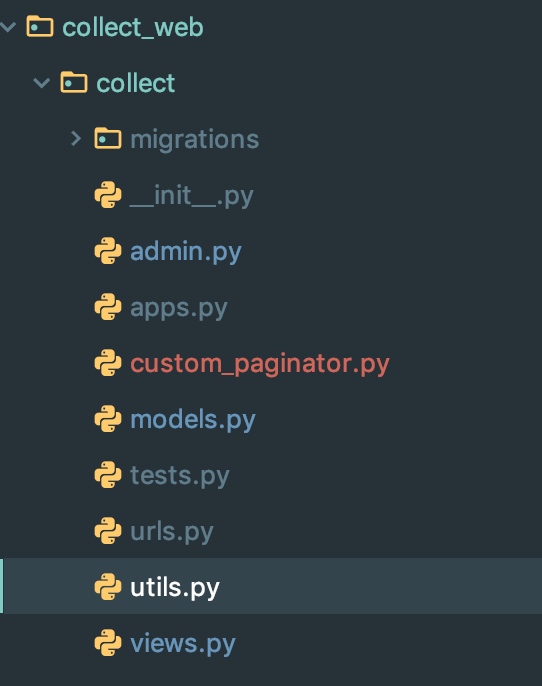项目中的taggit需要给标签添加新的功能
django-taggit扩展tag字段
class MyCustomTag(TagBase):
# ... fields here
tag_chinese = models.CharField('tag_chinese', null=True, blank=True, max_length=255)
class Meta:
verbose_name = _("Tag")
verbose_name_plural = _("Tags")
# ... methods (if any) here
class TaggedWhatever(GenericTaggedItemBase):
# TaggedWhatever can also extend TaggedItemBase or a combination of
# both TaggedItemBase and GenericTaggedItemBase. GenericTaggedItemBase
# allows using the same tag for different kinds of objects, in this
# example Food and Drink.
# Here is where you provide your custom Tag class.
tag = models.ForeignKey(MyCustomTag,
related_name="%(app_label)s_%(class)s_items", on_delete=models.CASCADE)
# 最后在自己的字段中添加相应的字段即可配置成功
class Dribbble(models.Model):
...
tag = TaggableManager(through=TaggedWhatever)
形成的数据库如下:
collect_mycustomtag数据库

collect_taggedwhatever

这样就可以给标签添加一个tag字段
在添加以及列表页显示自己的标签字段
在collect app中添加utils.py文件

def comma_splitter(tag_string):
tags = []
tags_with_c = tag_string.split(',')
for tag_with_c in tags_with_c:
if '(' in tag_with_c:
tag = tag_with_c.split('(')[0]
tags.append(tag.strip().lower())
else:
tags.append(tag_with_c.strip().lower())
return tags
def comma_joiner(tags):
tag_str = ""
for t in tags:
if t.tag_chinese:
tag_str = tag_str + f"{t.name}({t.tag_chinese}),"
else:
tag_str = tag_str + f"{t.name}(),"
return tag_str
最后在settings.py文件中添加相应的配置
TAGGIT_TAGS_FROM_STRING = 'collect.utils.comma_splitter'
TAGGIT_STRING_FROM_TAGS = 'collect.utils.comma_joiner'
详情可以参考